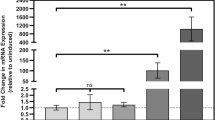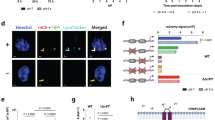Abstract
The resilience of Mycobacterium tuberculosis (MTB) emerges from its ability to effectively counteract immunological, environmental and antitubercular challenges. Here, we demonstrate that MTB can tolerate drug treatment by adopting a tolerant state that can be deciphered through systems analysis of its transcriptional responses. Specifically, we demonstrate how treatment with the antitubercular drug bedaquiline activates a regulatory network that coordinates multiple resistance mechanisms to push MTB into a tolerant state. Disruption of this network, by knocking out its predicted transcription factors, Rv0324 and Rv0880, significantly increased bedaquiline killing and enabled the discovery of a second drug, pretomanid, that potentiated killing by bedaquiline. We demonstrate that the synergistic effect of this combination emerges, in part, through disruption of the tolerance network. We discuss how this network strategy also predicts drug combinations with antagonistic interactions, potentially accelerating the discovery of new effective combination drug regimens for tuberculosis.
This is a preview of subscription content, access via your institution
Access options
Subscribe to this journal
Receive 12 digital issues and online access to articles
$119.00 per year
only $9.92 per issue
Buy this article
- Purchase on Springer Link
- Instant access to full article PDF
Prices may be subject to local taxes which are calculated during checkout



Similar content being viewed by others
References
Phillips, L. Infectious disease: TB's revenge. Nature 493, 14–16 (2013).
Diacon, A. H. et al. The diarylquinoline TMC207 for multidrug-resistant tuberculosis. N. Engl. J. Med. 360, 2397–2405 (2009).
Koul, A. et al. Delayed bactericidal response of Mycobacterium tuberculosis to bedaquiline involves remodelling of bacterial metabolism. Nature Commun. 5, 3369 (2014).
Koul, A. et al. Diarylquinolines target subunit c of mycobacterial ATP synthase. Nature Chem. Biol. 3, 323–324 (2007).
Koul, A. et al. Diarylquinolines are bactericidal for dormant mycobacteria as a result of disturbed ATP homeostasis. J. Biol. Chem. 283, 25273–25280 (2008).
Andries, K. et al. A diarylquinoline drug active on the ATP synthase of Mycobacterium tuberculosis. Science 307, 223–227 (2005).
Peterson, E. J. et al. A high-resolution network model for global gene regulation in Mycobacterium tuberculosis. Nucleic Acids Res. 42, 11291–11303 (2015).
Turkarslan, S. P. E. et al. A comprehensive map of genome-wide gene regulation in Mycobacterium tuberculosis. Sci. Data 2, 150010 (2015).
Ma, S. et al. Integrated modeling of gene regulatory and metabolic networks in Mycobacterium tuberculosis. PLoS Comput. Biol. 11, e1004543 (2015).
Chandrasekaran, S. & Price, N. D. Probabilistic integrative modeling of genome-scale metabolic and regulatory networks in Escherichia coli and Mycobacterium tuberculosis. Proc. Natl Acad. Sci. USA 107, 17845–17850 (2010).
Reiss, D. J., Baliga, N. S. & Bonneau, R. Integrated biclustering of heterogeneous genome-wide datasets for the inference of global regulatory networks. BMC Bioinformatics 7, 280 (2006).
Lew, J. M., Kapopoulou, A., Jones, L. M. & Cole, S. T. TubercuList—10 years after. Tuberculosis (Edinb) 91, 1–7 (2011).
Forrellad, M. A. et al. Virulence factors of the Mycobacterium tuberculosis complex. Virulence 4, 3–66 (2013).
Senaratne, R. H. et al. Mycobacterium tuberculosis strains disrupted in mce3 and mce4 operons are attenuated in mice. J. Med. Microbiol. 57, 164–170 (2008).
Shlomi, T., Cabili, M. N., Herrgard, M. J., Palsson, B. O. & Ruppin, E. Network-based prediction of human tissue-specific metabolism. Nature Biotechnol. 26, 1003–1010 (2008).
Zur, H., Ruppin, E. & Shlomi, T. iMAT: an integrative metabolic analysis tool. Bioinformatics 26, 3140–3142 (2010).
Rustad, T. R. et al. Mapping and manipulating the Mycobacterium tuberculosis transcriptome using a transcription factor overexpression-derived regulatory network. Genome Biol. 15, 502 (2014).
Tufariello, J. M. et al. Enhanced specialized transduction using recombineering in Mycobacterium tuberculosis. mBio 5, e01179–e01114 (2014).
Ioerger, T. R. et al. Identification of new drug targets and resistance mechanisms in Mycobacterium tuberculosis. PLoS ONE 8, e75245 (2013).
Stover, C. K. et al. A small-molecule nitroimidazopyran drug candidate for the treatment of tuberculosis. Nature 405, 962–966 (2000).
Minch, K. J. et al. The DNA-binding network of Mycobacterium tuberculosis. Nature Commun. 6, 5829 (2015).
Bansal, M. et al. A community computational challenge to predict the activity of pairs of compounds. Nature Biotechnol. 32, 1213–1222 (2014).
Hards, K. et al. Bactericidal mode of action of bedaquiline. J. Antimicrob. Chemother. 70, 2028–2037 (2015).
Berney, M., Hartman, T. E. & Jacobs, W. R. Jr. A Mycobacterium tuberculosis cytochrome bd oxidase mutant is hypersensitive to bedaquiline. mBio 5, e01275–e01214 (2014).
Lu, P. et al. The cytochrome bd-type quinol oxidase is important for survival of Mycobacterium smegmatis under peroxide and antibiotic-induced stress. Sci. Rep. 5, 10333 (2015).
Pethe, K. et al. Discovery of Q203, a potent clinical candidate for the treatment of tuberculosis. Nature Med. 19, 1157–1160 (2013).
Boshoff, H. I. et al. The transcriptional responses of Mycobacterium tuberculosis to inhibitors of metabolism: novel insights into drug mechanisms of action. J. Biol. Chem. 279, 40174–40184 (2004).
Telenti, A. et al. Detection of rifampicin-resistance mutations in Mycobacterium tuberculosis. Lancet 341, 647–650 (1993).
Keren, I., Shah, D., Spoering, A., Kaldalu, N. & Lewis, K. Specialized persister cells and the mechanism of multidrug tolerance in Escherichia coli. J. Bacteriol. 186, 8172–8180 (2004).
Keren, I., Kaldalu, N., Spoering, A., Wang, Y. & Lewis, K. Persister cells and tolerance to antimicrobials. FEMS Microbiol. Lett. 230, 13–18 (2004).
Smith, P. A. & Romesberg, F. E. Combating bacteria and drug resistance by inhibiting mechanisms of persistence and adaptation. Nature Chem. Biol. 3, 549–556 (2007).
Pandey, D. P. & Gerdes, K. Toxin–antitoxin loci are highly abundant in free-living but lost from host-associated prokaryotes. Nucleic Acids Res. 33, 966–976 (2005).
Sala, A., Bordes, P. & Genevaux, P. Multiple toxin–antitoxin systems in Mycobacterium tuberculosis. Toxins (Basel) 6, 1002–1020 (2014).
Dhillon, J., Andries, K., Phillips, P. P. & Mitchison, D. A. Bactericidal activity of the diarylquinoline TMC207 against Mycobacterium tuberculosis outside and within cells. Tuberculosis 90, 301–305 (2010).
Diacon, A. H. et al. 14-day bactericidal activity of PA-824, bedaquiline, pyrazinamide, and moxifloxacin combinations: a randomised trial. Lancet 380, 986–993 (2012).
Tasneen, R. et al. Sterilizing activity of novel TMC207- and PA-824-containing regimens in a murine model of tuberculosis. Antimicrob. Agents Chemother. 55, 5485–5492 (2011).
Our Pipeline: Regimens TB Alliance, (2016); http://www.tballiance.org/portfolio/regimens
A Phase 2 Open Label Partially Randomized Trial to Evaluate the Efficacy, Safety and Tolerability of Combinations of Bedaquiline, Moxifloxacin, PA-824 and Pyrazinamide in Adult Subjects with Drug-Sensitive or Multi Drug-Resistant Pulmonary Tuberculosis (NC-005) (National Institutes of Health, 2015); https://clinicaltrials.gov/ct2/show/NCT02193776
Diacon, A. H. et al. Bactericidal activity of pyrazinamide and clofazimine alone and in combinations with pretomanid and bedaquiline. Am. J. Respir. Crit. Care Med. 191, 943–953 (2015).
A Phase 3 Study Assessing the Safety and Efficacy of Bedaquiline plus PA-824 plus Linezolid in Subjects with Drug Resistant Pulmonary Tuberculosis (National Institutes of Health, 2015); https://clinicaltrials.gov/ct2/show/NCT02333799
R Development Core Team. A Language and Environment for Statistical Computing (R Foundation for Statistical Computing, 2013).
Rogers, D. J. & Tanimoto, T. T. A computer program for classifying plants. Science 132, 1115–1118 (1960).
Shannon, P. et al. Cytoscape: a software environment for integrated models of biomolecular interaction networks. Genome Res. 13, 2498–2504 (2003).
Rustad, T. R., Harrell, M. I., Liao, R. & Sherman, D. R. The enduring hypoxic response of Mycobacterium tuberculosis. PLoS ONE 3, e1502 (2008).
Irizarry, R. A. et al. Exploration, normalization, and summaries of high density oligonucleotide array probe level data. Biostatistics 4, 249–264 (2003).
Ma, S. et al. Integrated modeling of gene regulatory and metabolic networks in Mycobacterium tuberculosis. PLoS Comput. Biol. 11, 1004543 (2015).
Becker, S. A. et al. Quantitative prediction of cellular metabolism with constraint-based models: the COBRA Toolbox. Nature Protoc. 2, 727–738 (2007).
Schellenberger, J. et al. Quantitative prediction of cellular metabolism with constraint-based models: the COBRA Toolbox v2.0. Nature Protoc. 6, 1290–1307 (2011).
Borisy, A. A. et al. Systematic discovery of multicomponent therapeutics. Proc. Natl Acad. Sci. USA 100, 7977–7982 (2003).
Acknowledgements
The authors thank members of the Baliga and Sherman laboratories for discussions, T. Rustad, J. Winkler and S. Hobbs for generating knockout and overexpressing strains, and Z. Simon, M. Sarvothama and R. Liao for technical help. Funding was provided by the National Institute of Allergy and Infectious Diseases of the National Institutes of Health (U19 AI10676, U19 AI111276 and ISBpilot-10135) and the National Institute of General Medical Sciences of the National Institutes of Health (P50GM076547).
Author information
Authors and Affiliations
Contributions
E.J.R.P. led the design and drafted the manuscript. E.J.R.P. and S.M. generated results and analysed data. S.M. helped design the study and helped draft online methods. D.R.S. helped designed the study, discussed results and commented on the manuscript. N.S.B. conceived of the study, discussed the results and drafted the manuscript.
Corresponding author
Ethics declarations
Competing interests
The authors declare no competing financial interests.
Supplementary information
Supplementary Information
Supplementary Figures 1-8 and Supplementary Tables 4 and 5. (PDF 2195 kb)
Supplementary Tables
Supplementary Tables 1–3 (XLSX 58 kb)
Rights and permissions
About this article
Cite this article
Peterson, E., Ma, S., Sherman, D. et al. Network analysis identifies Rv0324 and Rv0880 as regulators of bedaquiline tolerance in Mycobacterium tuberculosis. Nat Microbiol 1, 16078 (2016). https://doi.org/10.1038/nmicrobiol.2016.78
Received:
Accepted:
Published:
DOI: https://doi.org/10.1038/nmicrobiol.2016.78
This article is cited by
-
Quantitative measurement of antibiotic resistance in Mycobacterium tuberculosis reveals genetic determinants of resistance and susceptibility in a target gene approach
Nature Communications (2024)
-
Anti-tuberculosis treatment strategies and drug development: challenges and priorities
Nature Reviews Microbiology (2022)
-
Role of Disease Progression Models in Drug Development
Pharmaceutical Research (2022)
-
Quantitative prediction of conditional vulnerabilities in regulatory and metabolic networks using PRIME
npj Systems Biology and Applications (2021)
-
Wolffia arrhiza as a promising producer of recombinant hirudin
3 Biotech (2021)



